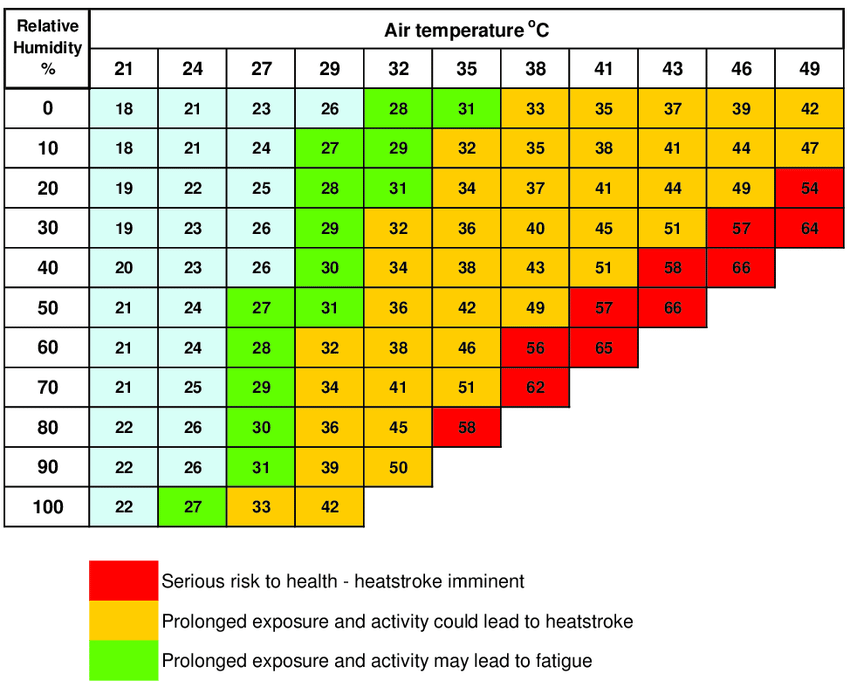
The heat index, also known as the apparent temperature, is what the temperature feels like to the human body when relative humidity is combined with the air temperature. This has important considerations for the human body’s comfort. When the body gets too hot, it begins to perspire or sweat to cool itself off. Heat is removed from the body by evaporation of that sweat. However, high relative humidity reduces the evaporation rate. This results in a lower rate of heat removal from the body, hence the sensation of being overheated. This effect is subjective, with different individuals perceiving heat differently for various reasons (such as differences in body shape, metabolic differences, differences in hydration, pregnancy, menopause, effects of drugs and/or drug withdrawal); its measurement has been based on subjective descriptions of how hot subjects feel for a given temperature and humidity. This results in a heat index that relates one combination of temperature and humidity to another.
Because the heat index is based on temperatures in the shade, while people often move across sunny areas, the heat index can give a much lower temperature than actual conditions of typical outdoor activities. Also, for people exercising or active, at the time, then the heat index could give a temperature lower than the felt conditions.